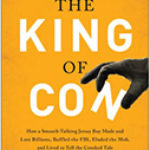Politics And Violence In Central America And The Caribbean

Author: Hannes Warnecke-Berger
Publisher: Cham, Switzerland: Palgrave Macmillan, 2019. 221p.
Reviewer: David Carey Jr. | September 2020
During a 2020 dengue outbreak that coincided with the Covid-19 pandemic in Honduras, criminal gangs blocked government health care workers from gaining access to some of the hardest hit areas in the department of Cortés. At a time when gangs increasingly wreak havoc in Central America and thus catalyze immigration to the United States, Hannes Warnecke-Berger’s book entitled Politics and Violence in Central America and the Caribbean is timely. Grounded in historical narratives of El Salvador, Jamaica, and Belize, Warnecke-Berger compares the evolution of violence in those countries. The similarities are as striking as the distinctions. Although the title of the book is misleading, with only three of the fifteen nations in the region represented, the comparison is apt because Belize often comprised a mix of the forms and dynamics of violence found in Jamaica and El Salvador. According to Warnecke-Berger, the power and prevalence of cultural scripts of violence explain the evolution of gang violence in all three countries. He also emphasizes how the political economy, particularly structural adjustment policies and remittances, creates conditions whereby violence thrives in each country.
More important in El Salvador and Jamaica than Belize, remittances had differential impacts in each place. Whereas migrant money flows stabilized Jamaica’s economy, remittances caused microeconomic instability in El Salvador by creating new inequalities between poor and working-class families who received money from relatives abroad and those who did not. Even within families, remittances created volatility because their timing and frequency often were unpredictable. Those dynamics undermined local economies in ways that made communities more susceptible to violence. Although he does not draw upon research that demonstrates that Salvadoran female migrants were more generous and reliable in their remittance than their male counterparts, Warnecke-Berger points out that the majority of Belizean migrants were women.[1] Their remittances were crucial to the children and grandparents they left behind. During the 1990s, some twenty to twenty-five thousand “absentee parents” developed a transnational network from Chicago and Los Angeles to Belize. Unfortunately, Warnecke-Berger generally ignores the role of gender, so Belizean female migrants remain obscure. The omission of gender in Warnecke-Berger’s analysis becomes particularly glaring when he fails to explore, let alone mention, feminicide in El Salvador, which had the highest rate in the Americas, at 6.8 female victims per every 100,000 women in 2018.[2]
Parting with much of the academic literature on violence in Latin America, Warnecke-Berger dives deeply into history. His substantive second chapter is dedicated to the “Roots of Current Violence,” from 1500-1980. Throughout the manuscript, the author emphasizes that understanding history is crucial to unpacking contemporary violence. He closely examines how gangs began as nonviolent groups of local youths who may have engaged in theft but little else in the way of crime. By the 1960s, rivalries between gangs began to evolve. Whereas revolutionary guerrillas began to infiltrate and repurpose gangs in El Salvador in the 1980s, political parties coopted gangs in Jamaica. In contrast to El Salvador, where Maras Salvatruchas and Calle 18 dominated gang relations as a result of massive U.S. deportations to that country, in Belize various local gangs developed, thereby eschewing a dyadic struggle between two rival powers despite the deportation of Crips and Bloods from the United States in the 1980s. Warnecke-Berger’s attention to historical trajectories reveals that twenty-first century gangs in each country took distinct paths in their proclivities toward violence. With that nuanced analysis, he surprisingly ignores pathbreaking studies of gangs in Guatemala by Deborah Levenson (Adiós Niño) and Anthony Fontes (Mortal Doubt).[3]
Although much of the literature on violence in Central America and the Caribbean associates gangs with extortion and (to a lesser extent) the drug trade, the author only briefly explores those criminal activities, albeit with unconventional insight. He argues, “[d]rug money initially from ganja production and later on from cocaine trafficking stabilized the socioeconomic situation for many Jamaicans” (173). While he recognizes that social control shifted from political to drug dons in Jamaica in the 1980s, he emphasizes that the instability of transactions in the drug trade caused violence. Largely overlooking the Salvadorian drug trade (which is unfortunate because the transportistas who control it produce violence, corruption, and impunity), he underscores that by the 1980s, marijuana comprised all of Belize’s exports—representing 40 percent of its Gross Domestic Product. “Belizean Breeze” cannabis became a U.S. market brand (207). By the turn of the twenty first century, 37% of the cocaine transported into the United States came from Belize. Much of Central America and parts of the Caribbean were transit routes for cocaine coming from Colombia.
Warnecke-Berger concludes that neither drugs nor oil caused violence — instead fear did. Framing his definition partly in perceptions of crime, he argues that fear comprises both an objective component and “a subjective and individual feeling” (266). Introduced in the conclusion, fear as a catalyst for violence (because “it forces people to react” [266]) is a compelling argument but not clearly grounded in his empirical evidence. Had he introduced the assertion in the introduction and woven it throughout the manuscript, his claim would have been more convincing.
In his analysis of violence in El Salvador, Warnecke-Berger portrays gangs, police, and vigilantes as kindred spirits. He argues that police behavior resembled that of gangs in their efforts to disrupt rather than maintain social order. Although vigilantism often has its roots in restoring local justice, he asserts that vigilantes too sought to sow insecurity and fear among people. As part of a larger social cleansing wave across El Salvador, Sombra negra (Black Shadow) formed in San Miguel “to combat crime and to restore order” (150). Death squads similarly claimed to give criminals the “medicine that they deserve” (151). Warnecke-Berger draws upon other medical analogies by quoting scholars who portray gang violence as an “epidemic-like process of social contagion” [217].) Whereas gangs operated mainly on economic motivations, death squads justified their actions under the premise of social control, and thus targeted gang members. Often the police were involved in these organizations—all of which increased violence in El Salvador. Rather than reassuring people, the police evoked mistrust among locals by heightening their sense of insecurity.
As part of his theoretical framework, the author distinguishes between horizontal (among equals) and vertical (between power holders and their subordinates) violence. He demonstrates how police enacted vertical violence in all three countries. In El Salvador death squads and vigilantism also perpetuated vertical violence. In contrast to those power-laden relationships, horizontal violence emerged between people of the same socioeconomic status in all three nations.
Warnecke-Berger sometimes exaggerates his contributions. In what he dubs a “provocative hypothesis” (72), he argues that authoritarian regimes coopted honor violence and domestic violence to advance their own power. By the mid 1990s, anthropologist Deborah Poole and others had demonstrated how authoritarian regimes channeled rather than curbed domestic and other forms of local violence to evoke terror that called for “overt authoritarian domination.”[4] To highlight his original analysis, he could have framed his demonstration of how state’s harnessed horizontal violence to buttress their own power as part of that larger literature. Some of his provocative assertions risk misinterpretation. He argues that peasants maintained cultural autonomy by preserving traditions of violence. Although that proposition essentializes peasants as inherently violent, he encourages other scholars to consider whether that violent autonomy is a “structural precondition for” revolution (110).
Throughout Politics and Violence in Central America and the Caribbean, Warnecke-Berger’s honesty is refreshing. He regularly reminds readers that his assertions regarding Belize are merely speculative because so little research has been conducted on that country. Based on interviews, focus groups, participatory research, and newspapers, his research only sparingly informs the book. Most of his evidence and examples come from secondary sources, which gives the book the feel of a theory-laden syncretic study. That perception is reinforced by bibliographies that do not separate primary from secondary sources, which makes it hard to gauge the contribution (and quantity) of original research. With its incisive case study of Kingston (Jamaica), Desmond Arias’ Criminal Enterprises and Governance in Latin America and the Caribbean is surprisingly absent from Warnecke-Berger’s book.[5]
For those unfamiliar with political science and anthropology jargon, this book is a challenging read. For example, chapter four “shows that the political economy of remittances led to processes of social verticalization within subaltern groups resulting in the tendency to atomize society” (127). In that sentence alone, Warnecke-Berger assumes readers understand the terms political economy, remittances, social verticalization, subaltern groups, and atomize society. Their definitions are notably absent from the text, and none of them appear in the sparse index. In a critique aimed more at the publisher than the author, the book would have benefitted from close copyediting to eradicate typos, reduce redundancy, and smooth awkward phrases and sentences. Aimed at specialists of violence in Central America and the Caribbean, Politics and Violence in Central America and the Caribbean will encourage readers to reconceptualize the origins, forms, and effects of violence in the region.
David Carey Jr. Loyola University Maryland
[1] Leisy Abrego, “Economic Well-Being in Salvadoran Transnational Families: How Gender Affects Remittance Practices,” Journal of Marriage and Family 71, no. 4 (2009): 1070-1085
[2] United Nations Economic Commission for Latin America and the Caribbean (UN ECLAC), Gender Equality Observatory for Latin America and the Caribbean (GEOLAC), ca. 2019, available at https://oig.cepal.org/en/indicators/femicide-or-feminicide last accessed June 17, 2020.
[3] Deborah T. Levenson, Adiós Niño: The Gangs of Guatemala City and the Politics of Death (Durham, NC: Duke University Press, 2013); Anthony Fontes Mortal Doubt: Transnational Gangs and Social Order in Guatemala City (Berkeley: Universit of California Press, 2018).
[4] Deborah Poole, “Introduction: Anthropological Perspectives on Violence and Culture–A View from the Peruvian High Provinces,” in Unruly Order: Violence, Power, and Cultural Identity in the High Provinces of Southern Peru, ed. Deborah Poole, 1–30 (Boulder, CO: Westview, 1994), 8.
[5] Desmond Arias Criminal Enterprises and Governance in Latin America and the Caribbean (Cambridge: Cambridge University Press, 2017).


